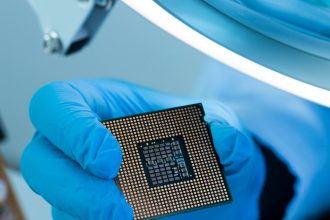Imagine this for a moment: you’re sitting in a coffee shop scrolling through your phone, and without even plugging it in or placing it on a wireless pad, it keeps staying magically powered up, even if you walk across the room. Sounds like straight out of sci-fi, right? Well, that’s actually the future unfolding right now. Thanks to advances in wireless long-distance charging technology, the days of tangled cables and low-battery anxiety may soon be a thing of the past. But how exactly does all this work? How can we send electrical power through the air to reach our devices without wires? Let’s dive into the science, the tech, and what it all means for our daily lives.
How Wireless Long-Distance Charging Delivers Power from the Sky: The Science and Magic Behind It
At its core, wireless long-distance charging is all about sending energy through invisible electromagnetic waves—think of these as beams of “energy magic” that travel through the air and wake up your devices with power. You might picture a spaceship blasting a laser beam to recharge a drone on the fly, but in reality, most systems use a much more subtle and safe approach involving resonant electromagnetic fields.
The basic setup involves transmitting antennas or coils that generate oscillating electromagnetic fields. Your device needs a receiver—usually a coil or antenna embedded inside—to pick up these invisible waves. When tuned correctly, the incoming electromagnetic energy is converted back into electrical current, recharging your device’s battery. It’s similar to how a radio or Wi-Fi signal works but designed specifically for power transfer rather than data.
Resonant Inductive Coupling: This method is a key player here. It’s like two tuning forks vibrating at just the right frequency—when they resonate, energy flows efficiently from one to the other. In practice, a transmitter has a coil that creates a magnetic field by passing an alternating current through it. If your device contains a similar coil tuned to the same frequency, it can pick up this magnetic energy even from a few meters away. The close spacing (typically a few inches to a few meters) was traditionally needed for wireless charging pads to work, but with resonance, the range can get longer, making it possible to keep devices charged at a distance.
Radio Frequency (RF) Energy Transfer: Another method involves RF signals—kind of like modern radio broadcasting. Tiny antennas in your device can harvest energy from RF waves emitted by a dedicated transmitter. Think of it like catching radio signals, but instead of listening to music, you’re capturing tiny amounts of energy to keep your device powered. RF transfer can cover larger distances but typically delivers less power quickly, making it more suitable for sensors or IoT devices rather than your smartphone.
Advanced Techniques: Some really cutting-edge systems explore laser-based energy transfer, kind of like shooting a laser beam from a ground station to a receiver on a drone or satellite. These beams are highly focused, allowing for efficient transmission over very long distances, although safety and line-of-sight issues remain challenges.
While the science may sound complex, the main idea boils down to: generate an electromagnetic field, receive that field with a tuned receiver, and convert it back into usable electrical power—all without wires in sight.
The Nuts and Bolts of Wireless Power Transmission: How This High-Tech Trick Actually Sends Electricity Through the Air and Why It Matters
So, how does all this magic happen behind the scenes? Let’s uncover the nuts and bolts of wireless power transmission technologies, and why they might become everyday essentials.
The Physics of Sending Power: At the heart of wireless power transfer is a dance between electromagnetic fields and coils or antennas. When an alternating current flows through a coil, it creates a magnetic field that oscillates. If a second coil nearby is tuned to the same frequency, it can “pick up” this magnetic energy and generate current. This is resonant inductive coupling, and it’s the basis for many wireless charging devices today. When properly aligned and tuned, a significant amount of energy can pass through the air, just like food for thought—or electrons for electrons!
Distance and Efficiency: One of the biggest challenges is efficiency—how effectively can power be transferred over distance? Close-range systems are well-developed, but extending this to longer distances involves tweaking the frequency, coil design, and resonance tuning. As the distance grows, some energy inevitably gets lost, which means less power makes it to your device. Researchers are constantly working to improve this ratio, making long-distance wireless charging more practical.
RF Transfers and Antennas: RF energy transfer relies on tiny antennas to emit and harvest radio waves. Think of your Wi-Fi router, but instead of data, it’s sending tiny “bits” of energy. This method can cover larger areas, like powering sensors sprinkled across a city or recharging electric vehicles wirelessly while they move along designated routes.
Safety and Regulations: Any system that beams electromagnetic energy through the air has safety considerations—exposure levels, interference, and environmental impacts must all be carefully managed. Systems are designed to emit radiation within safe limits established by regulatory bodies like the FCC. Moreover, many systems include safeguards such as automatic shutdown if unintended objects (like humans or animals) come too close to focused energy beams.
Potential and Limitations: While the tech has huge potential for convenience, infrastructure efficiency, and even environmental benefits, there are limitations. Think about the need for precise alignment, line-of-sight for laser systems, potential power loss over distance, and the current inability to universally power large devices with a single setup yet.
Why It All Matters – The Future Is Nearly Wireless
Wireless long-distance charging isn’t just an exciting gadget trick; it could revolutionize how we think about infrastructure and energy use. Imagine a city where sensors, health monitors, e-vehicles, and personal devices are all powered seamlessly—no cords, no outlets, no hassle. Think about airports with wireless charging zones, or remote communities benefiting from off-grid power sources transmitted through the air.
The ultimate goal? Making energy delivery as simple as catching radio or Wi-Fi signals, but with much higher power levels and safety. From smarter cities and IoT connectivity to eco-friendly charging solutions, the implications are enormous.
Wrapping It Up
Wireless long-distance charging might seem like sci-fi, but it’s very much rooted in proven science and technology. It combines physics, engineering, and safety considerations to create invisible energy beams that could soon become part of everyday life. While challenges remain—like efficiency over long distances and safety—ongoing innovations promise a future where charging your devices is as effortless as holding out your hand for a beam of power.
In the not-too-distant future, powering gadgets, vehicles, and even homes could be as simple as waving a device or walking into a room filled with these “air chargers.” The sky’s the limit—and perhaps soon, the sky could literally power all our devices.
Power from the air isn’t just a clever concept anymore; it’s quickly becoming a part of our daily reality—and it might just change everything.







